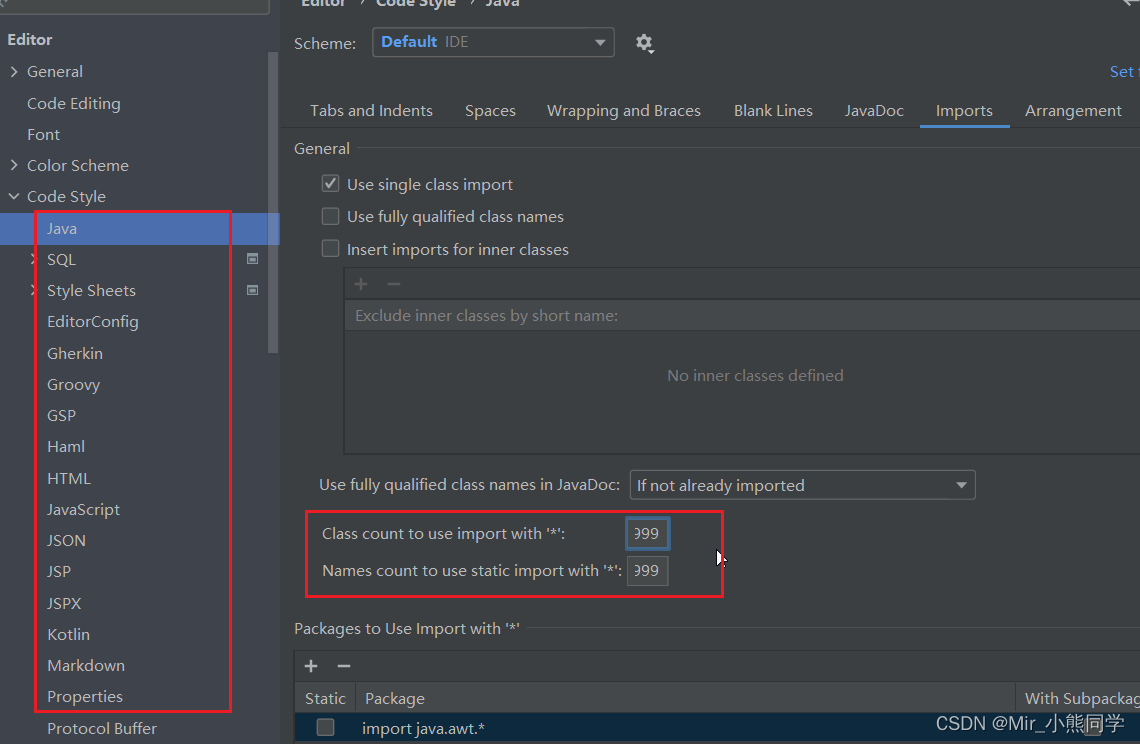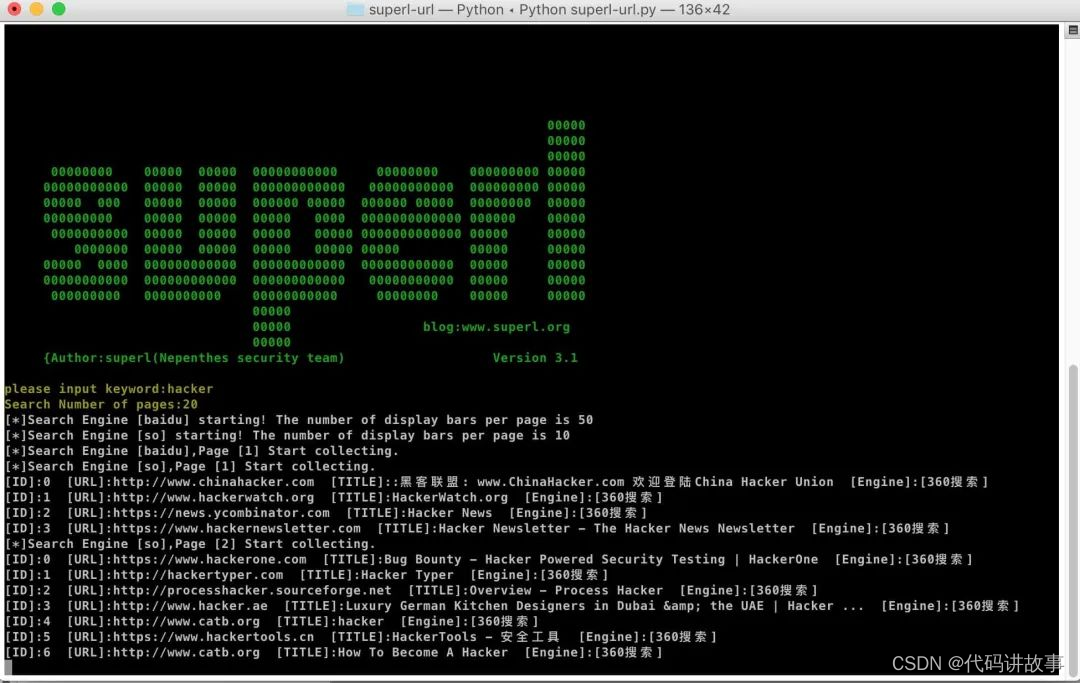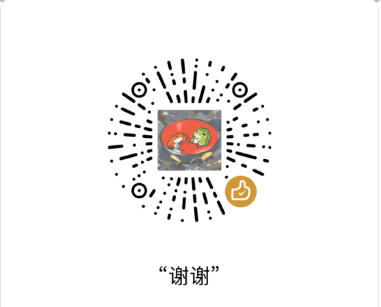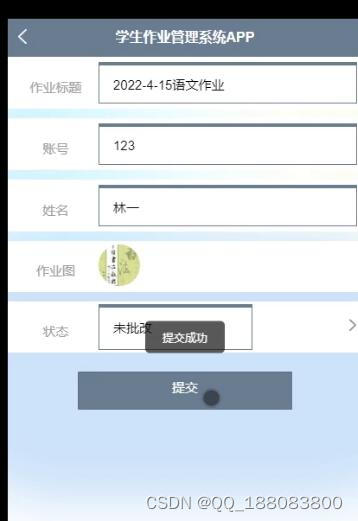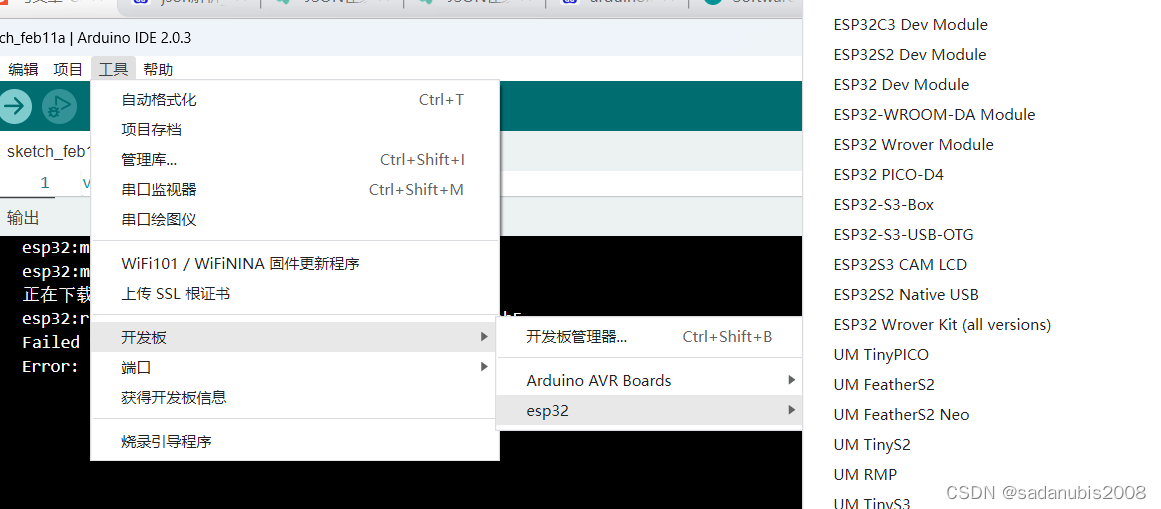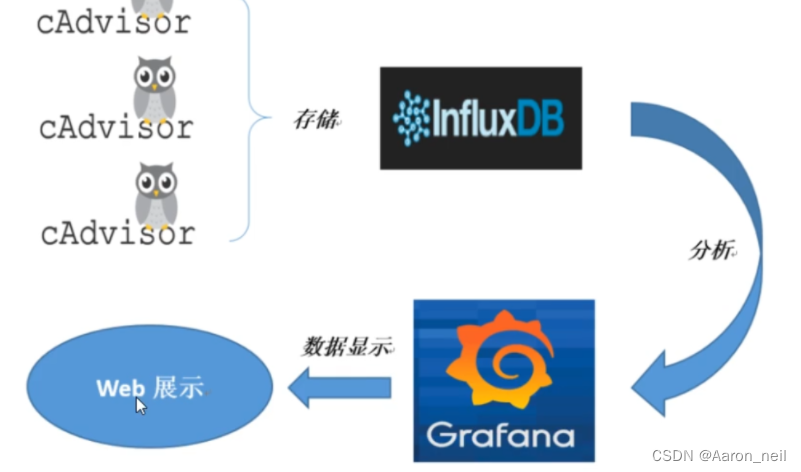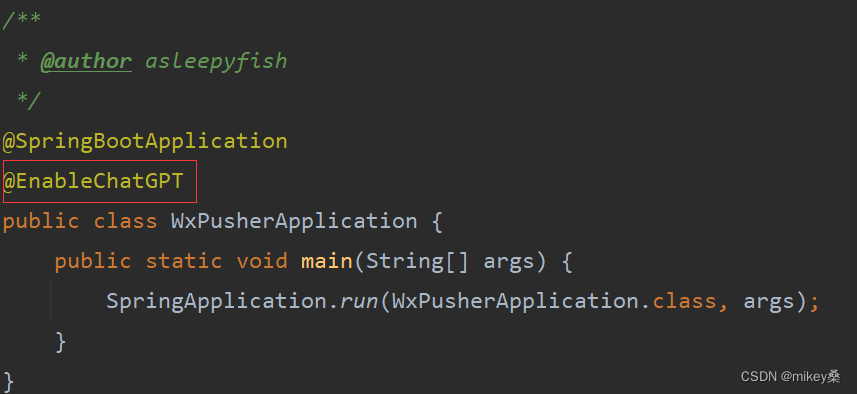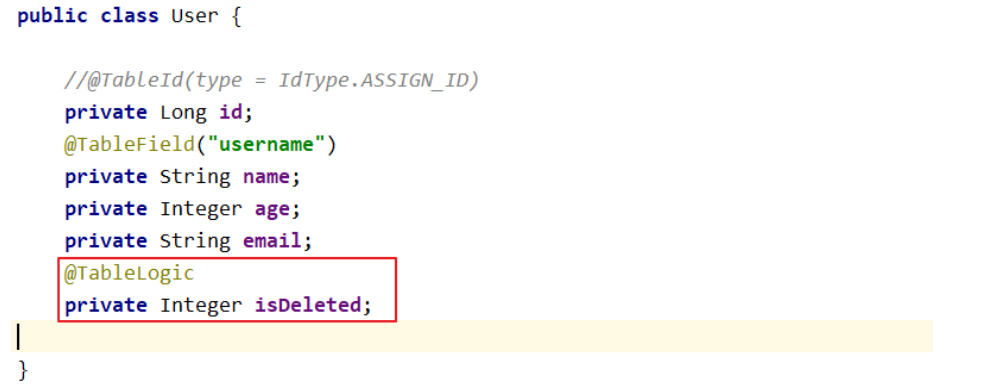目录
- 第一章、SpringMVC基本了解
- 1.1 概述
- 1.2 SpringMVC处理请求原理简图
- 第二章、SpringMVC搭建框架
- 1、搭建SpringMVC框架
- 1.1 创建工程【web工程】
- 1.2 导入jar包
- 1.3 编写配置文件
- (1) web.xml注册DispatcherServlet
- (2) springmvc.xml
- (3) index.html
- 1.4 编写请求处理器【Controller|Handler】
- 1.5 准备页面进行,测试
- 第三章 @RequestMapping详解
- 3.1 @RequestMapping注解位置
- 3.2 @RequestMapping注解属性
- 3.3 @RequestMapping支持Ant 风格的路径(了解)
- 第四章 @PathVariable 注解
- 4.1 @PathVariable注解位置
- 4.2 @PathVariable注解作用
- 4.3 @PathVariable注解属性
- 第五章 REST【RESTful】风格CRUD
- 5.1 REST的CRUD与传统风格CRUD对比
- 5.2 REST风格CRUD优势
- 5.3 实现PUT&DELETE提交方式步骤
- 5.4 源码解析HiddenHttpMethodFilter
- 第六章 SpringMVC处理请求数据
- 6.1 处理请求参数
- 6.2 处理请头
- 6.3 处理Cookie信息
- 6.4 使用原生Servlet-API
- 第七章 SpringMVC处理响应数据
- 7.1 使用ModelAndView
- 7.2 使用Model、ModelMap、Map
- 7.3 SpringMVC中域对象
- 第八章 SpringMVC处理请求响应乱码
- 8.1 源码解析CharacterEncodingFilter
- 8.2 处理请求与响应乱码
- 第九章 SpringMVC视图及视图解析器
- 9.1 视图解析器对象【ViewResolver】
- 9.2 视图对象【View】
- 第十章 源码解析SpringMVC工作原理
- 10.1 Controller中方法的返回值问题
- 10.2 视图及视图解析器源码
- 第十一章 视图控制器&重定向&加载静态资源
- 11.1 视图控制器
- 11.2 重定向
- 11.3 加载静态资源
- 11.4 源码解析重定向原理
第一章、SpringMVC基本了解
1.1 概述
-
SpringMVC是Spring子框架
-
SpringMVC是Spring 为【展现层|表示层|表述层|控制层】提供的基于 MVC 设计理念的优秀的 Web 框架,是目前最主流的MVC 框架。
-
SpringMVC是非侵入式:可以使用注解让普通java对象,作为请求处理器【Controller】。
-
SpringMVC是用来代替Servlet
Servlet作用
- 处理请求
- 将数据共享到域中
- 做出响应
- 跳转页面【视图】
1.2 SpringMVC处理请求原理简图
- 请求
- DispatcherServlet【前端控制器】
- 将请求交给Controller|Handler
- Controller|Handler【请求处理器】
- 处理请求
- 返回数据模型
- ModelAndView
- Model:数据模型
- View:视图对象或视图名
- DispatcherServlet渲染视图
- 将数据共享到域中
- 跳转页面【视图】
- 响应
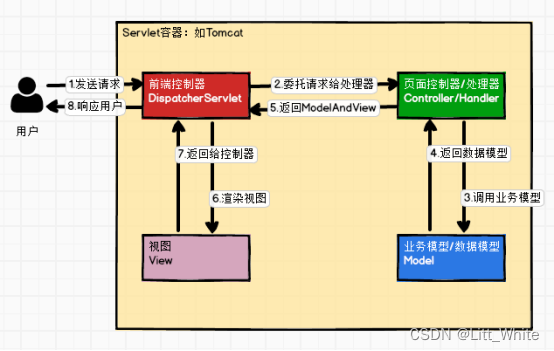
第二章、SpringMVC搭建框架
1、搭建SpringMVC框架
1.1 创建工程【web工程】
-
web项目结构
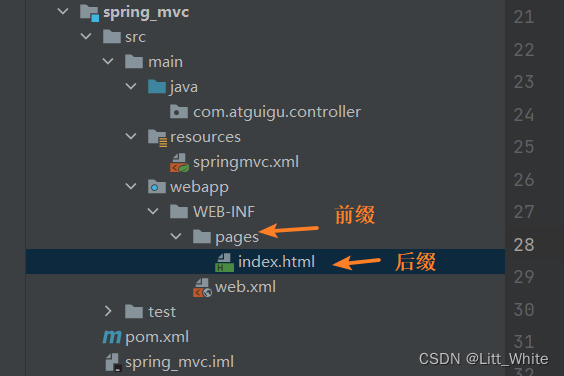
-
web.xml
<?xml version="1.0" encoding="UTF-8"?> <web-app xmlns="http://xmlns.jcp.org/xml/ns/javaee" xmlns:xsi="http://www.w3.org/2001/XMLSchema-instance" xsi:schemaLocation="http://xmlns.jcp.org/xml/ns/javaee http://xmlns.jcp.org/xml/ns/javaee/web-app_4_0.xsd" version="4.0"> </web-app> -
添加web模块
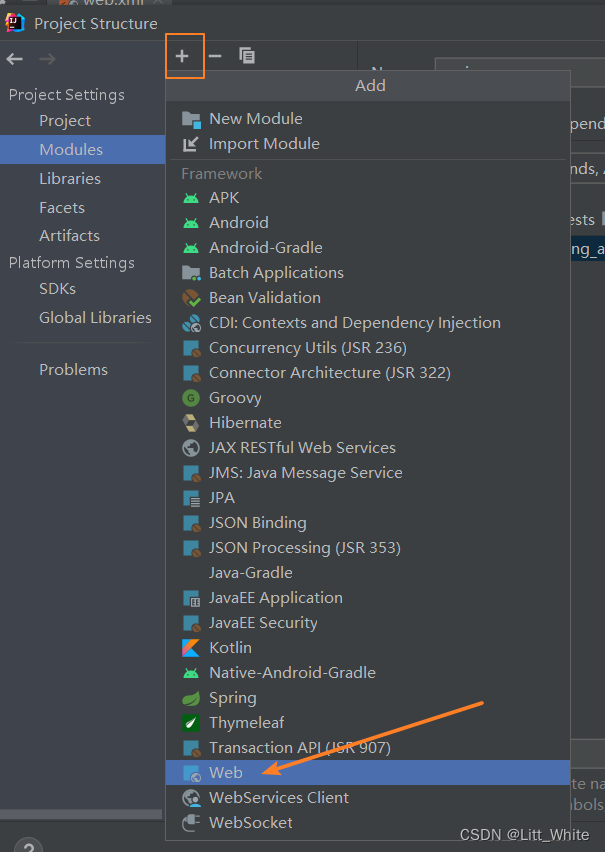
-
添加web模块
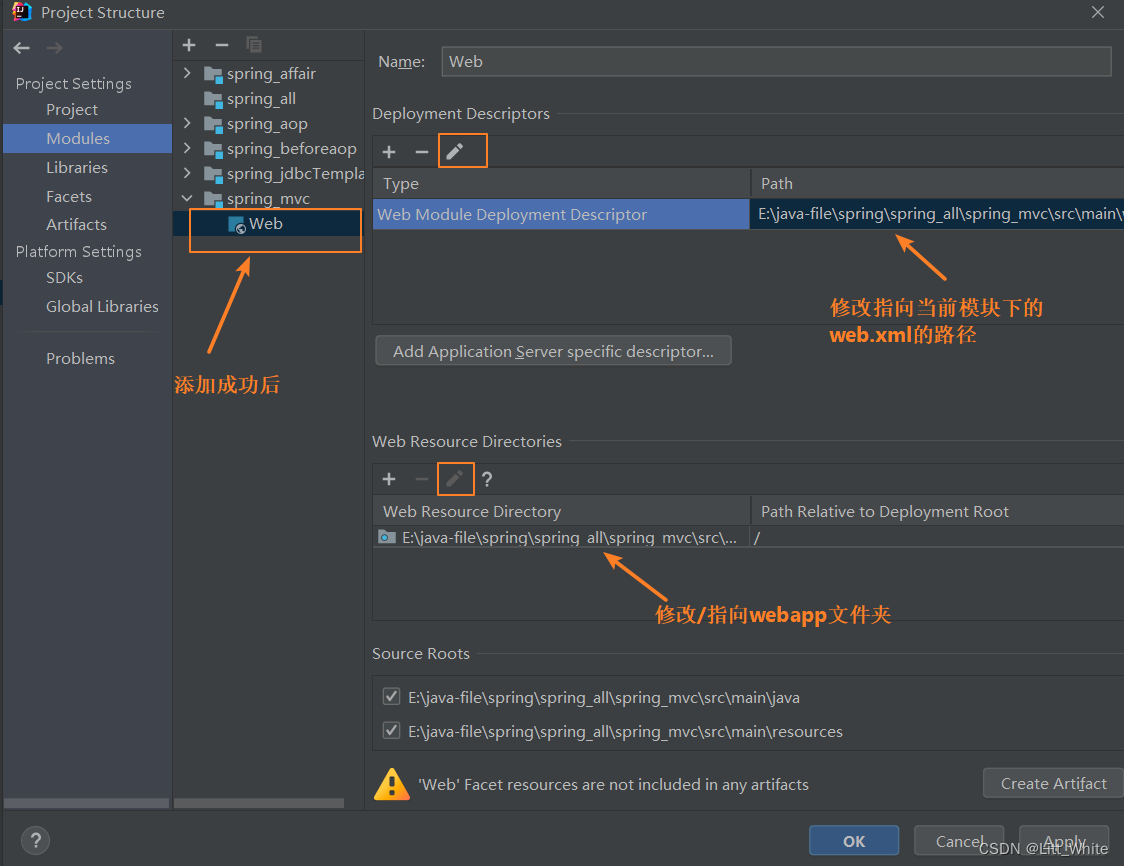
1.2 导入jar包
- E:\java-file\spring\spring_all\spring_mvc\pom.xml
<!--spring-webmvc--> <dependency> <groupId>org.springframework</groupId> <artifactId>spring-webmvc</artifactId> <version>5.3.1</version> </dependency> <!-- 导入thymeleaf与spring5的整合包 --> <dependency> <groupId>org.thymeleaf</groupId> <artifactId>thymeleaf-spring5</artifactId> <version>3.0.12.RELEASE</version> </dependency> <!--servlet-api--> <dependency> <groupId>javax.servlet</groupId> <artifactId>javax.servlet-api</artifactId> <version>4.0.1</version> <scope>provided</scope> </dependency>
1.3 编写配置文件
(1) web.xml注册DispatcherServlet
- url配置:/
- init-param(初始化参数):contextConfigLocation,设置springmvc.xml配置文件路径【管理容器对象】
- <load-on-startup>:设置DispatcherServlet优先级【启动服务器时,创建当前Servlet对象】
// src/main/webapp/WEB-INF/web.xml
<?xml version="1.0" encoding="UTF-8"?>
<web-app xmlns="http://xmlns.jcp.org/xml/ns/javaee"
xmlns:xsi="http://www.w3.org/2001/XMLSchema-instance"
xsi:schemaLocation="http://xmlns.jcp.org/xml/ns/javaee http://xmlns.jcp.org/xml/ns/javaee/web-app_4_0.xsd"
version="4.0">
<!-- 注册DispatcherServlet【前端控制器】-->
<servlet>
<servlet-name>DispatcherServlet</servlet-name>
<servlet-class>org.springframework.web.servlet.DispatcherServlet</servlet-class>
<!-- 设置springmvc.xml配置文件路径【管理容器对象】-->
<init-param>
<param-name>contextConfigLocation</param-name>
<param-value>classpath:springmvc.xml</param-value>
</init-param>
<!-- 设置DispatcherServlet优先级【启动服务器时,创建当前Servlet对象】-->
<load-on-startup>1</load-on-startup>
</servlet>
<servlet-mapping>
<servlet-name>DispatcherServlet</servlet-name>
<url-pattern>/</url-pattern>
</servlet-mapping>
</web-app>
(2) springmvc.xml
- 开启组件扫描
- 配置视图解析器【解析视图(设置视图前缀&后缀)】
- 注意:
<property name="prefix" value="/WEB-INF/pages"/>中的pages是可变的,代表的是WEB-INF文件下的文件名
- 注意:
// src/main/resources/springmvc.xml
<!-- - 开启组件扫描-->
<context:component-scan base-package="com.atguigu"></context:component-scan>
<!-- - 配置视图解析器【解析视图(设置视图前缀&后缀)】-->
<bean class="org.thymeleaf.spring5.view.ThymeleafViewResolver">
<!-- 配置字符集属性-->
<property name="characterEncoding" value="UTF-8"/>
<!-- 配置模板引擎属性-->
<property name="templateEngine">
<!-- 配置内部bean -->
<bean class="org.thymeleaf.spring5.SpringTemplateEngine">
<!-- 配置模块的解析器属性 -->
<property name="templateResolver">
<!-- 配置内部bean -->
<bean class="org.thymeleaf.spring5.templateresolver.SpringResourceTemplateResolver">
<!-- 视图前缀 -->
<property name="prefix" value="/WEB-INF/pages/"/>
<!-- 视图后缀 -->
<property name="suffix" value=".html"/>
<!-- <property name="templateMode" value="HTML5"/>-->
<!-- 配置字符集 -->
<property name="characterEncoding" value="UTF-8" />
</bean>
</property>
</bean>
</property>
</bean>
(3) index.html
demo演示:
<!DOCTYPE html>
<html lang="en" xmlns:th="http://www.thymeleaf.org">
<head>
<meta charset="UTF-8">
<title>首页</title>
</head>
<body>
<a th:href="@{/HelloController}">发送请求</a>
</body>
</html>
1.4 编写请求处理器【Controller|Handler】
- 使用**@Controller**注解标识请求处理器
- 使用**@RequestMapping**注解标识处理方法【URL】
- src/main/java/com/atguigu/controller/HelloController.java
package com.atguigu.controller; import org.springframework.stereotype.Controller; import org.springframework.web.bind.annotation.RequestMapping; @Controller // 标识当前类是一个请求处理器类 public class HelloController { /** * 配置url【/】,会映射(跳转)到 WEB-INF/index.html * @return */ @RequestMapping("/") public String toIndex(){ // /WEB-INF/pages/index.html // 物理视图名 = 视图前缀+逻辑视图名+视图后缀 // 物理视图名 = "/WEB-INF/pages/" + "index" + ".html" return "index"; } }
1.5 准备页面进行,测试
tomcat集成到idea

测试
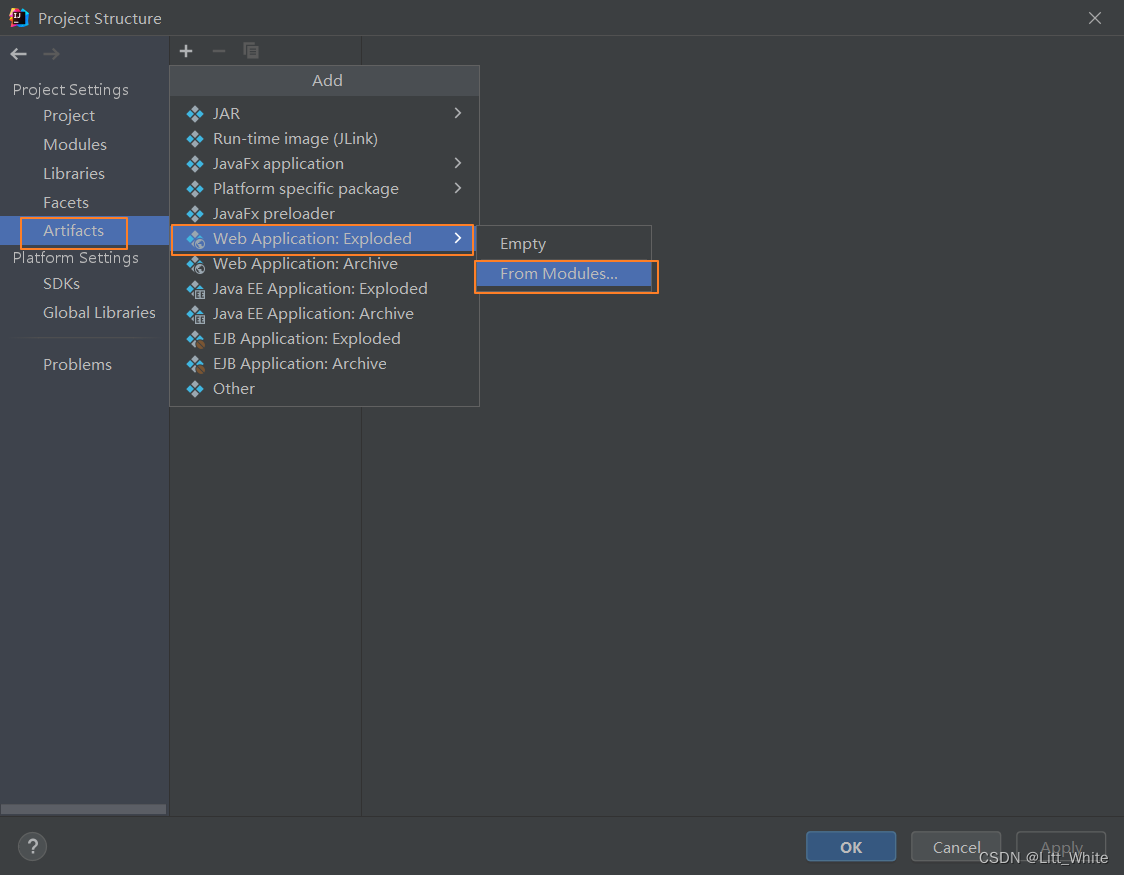

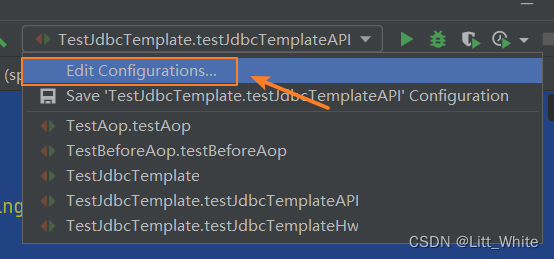
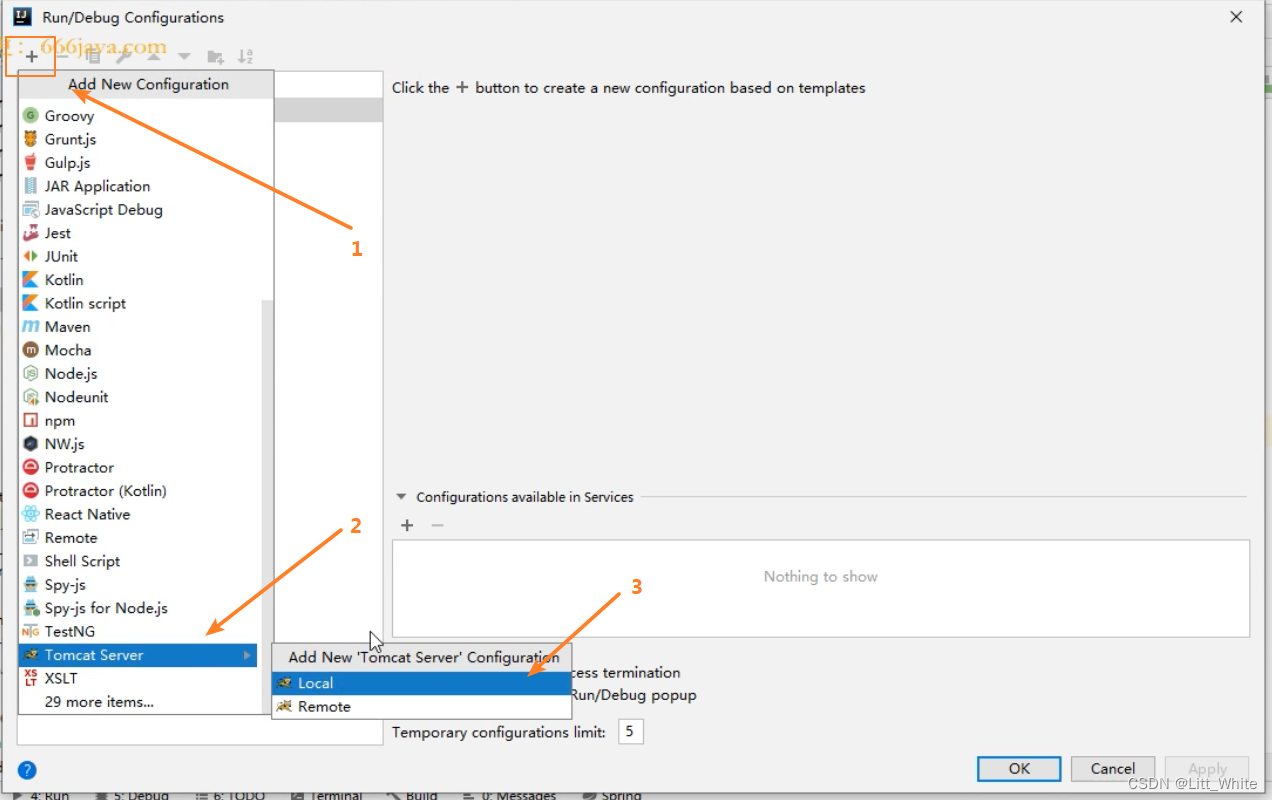
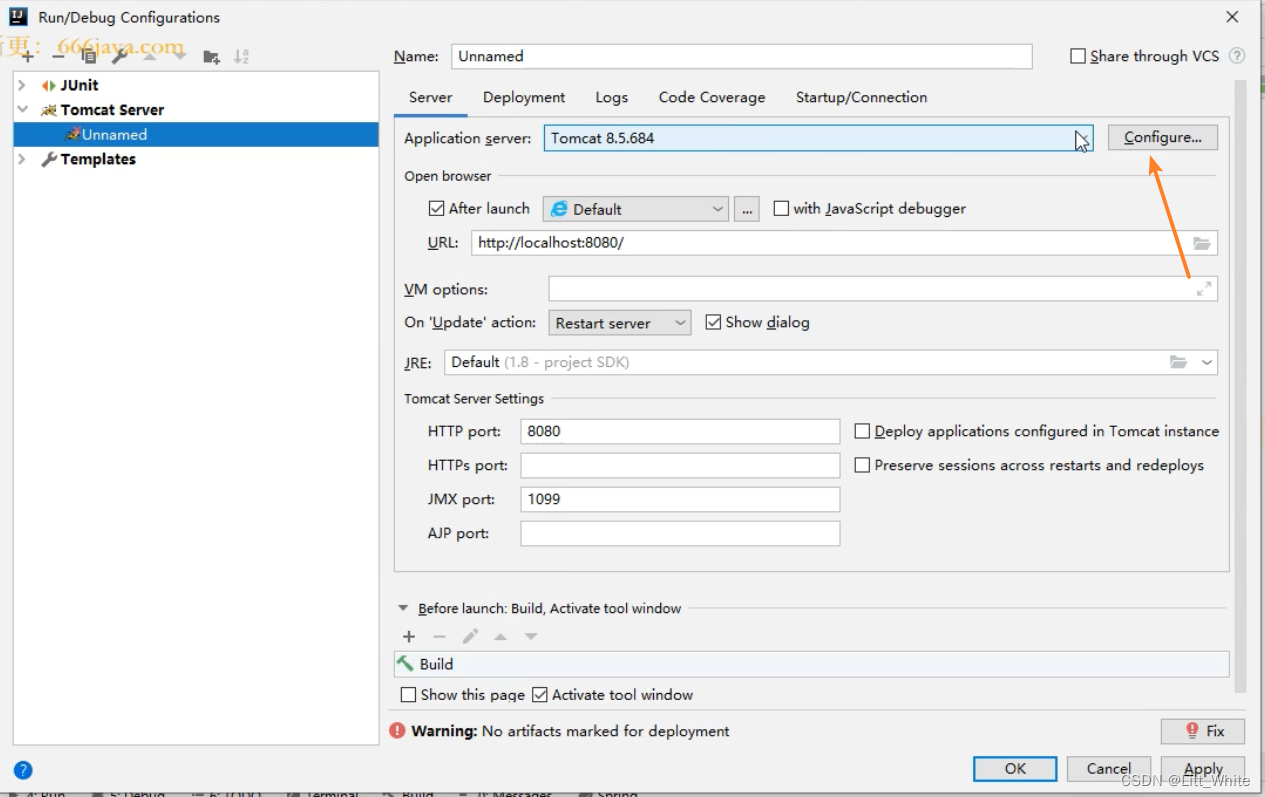
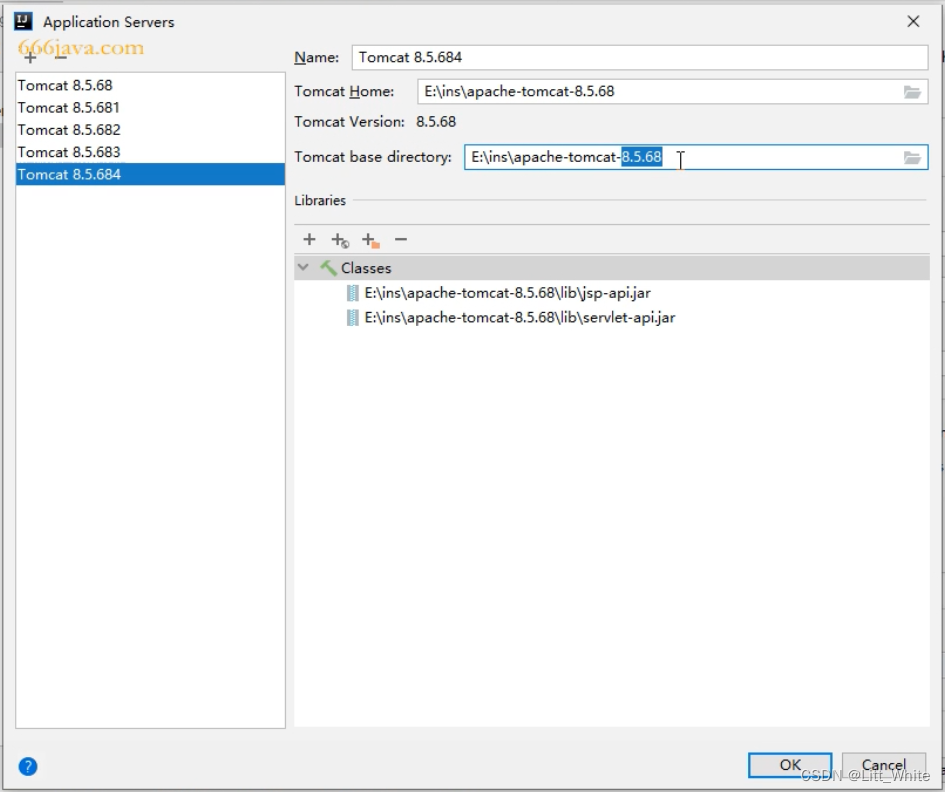
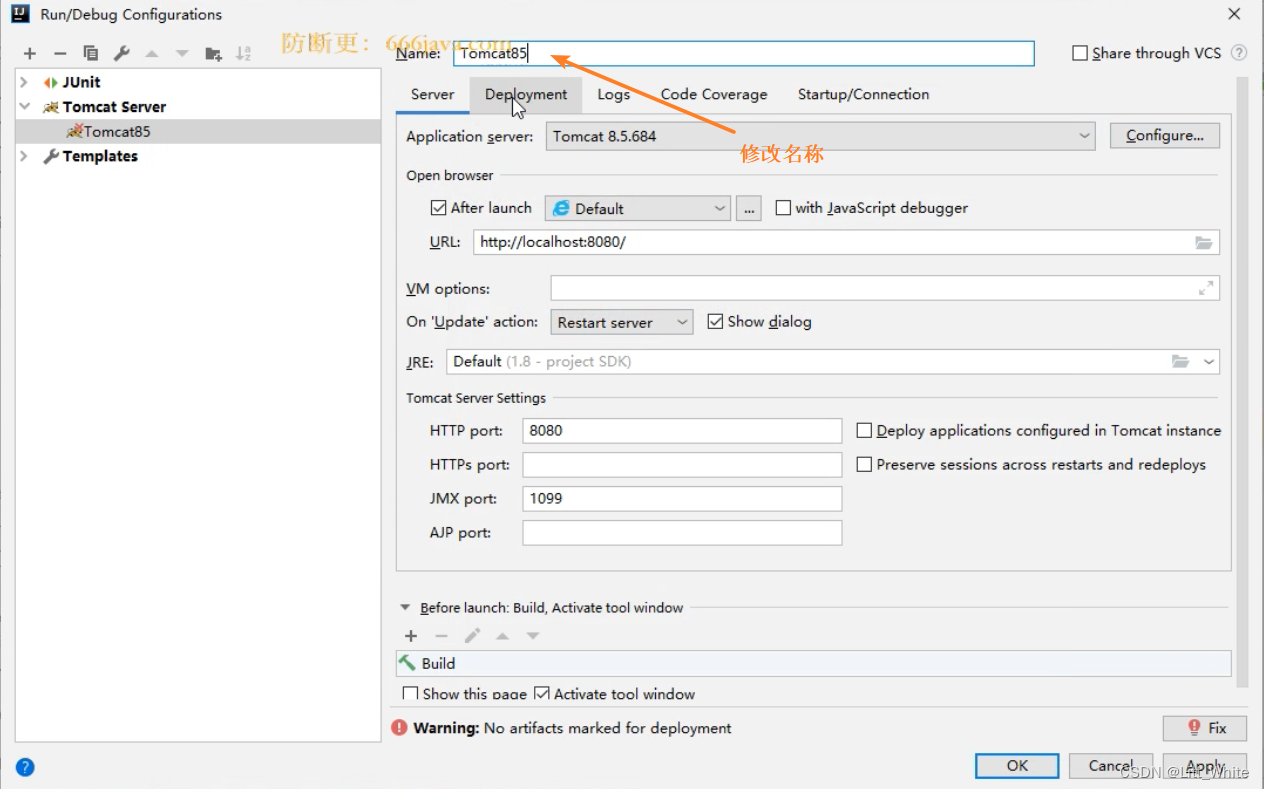
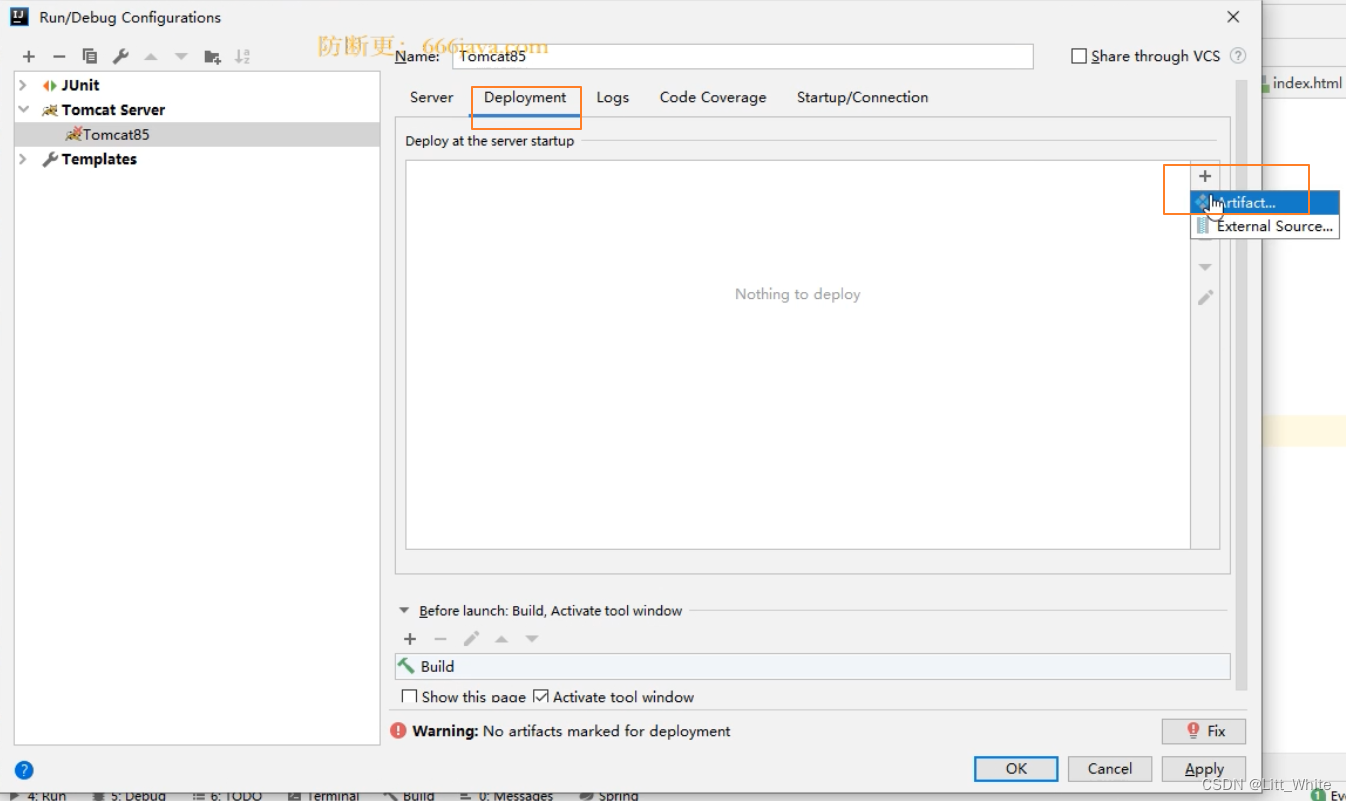
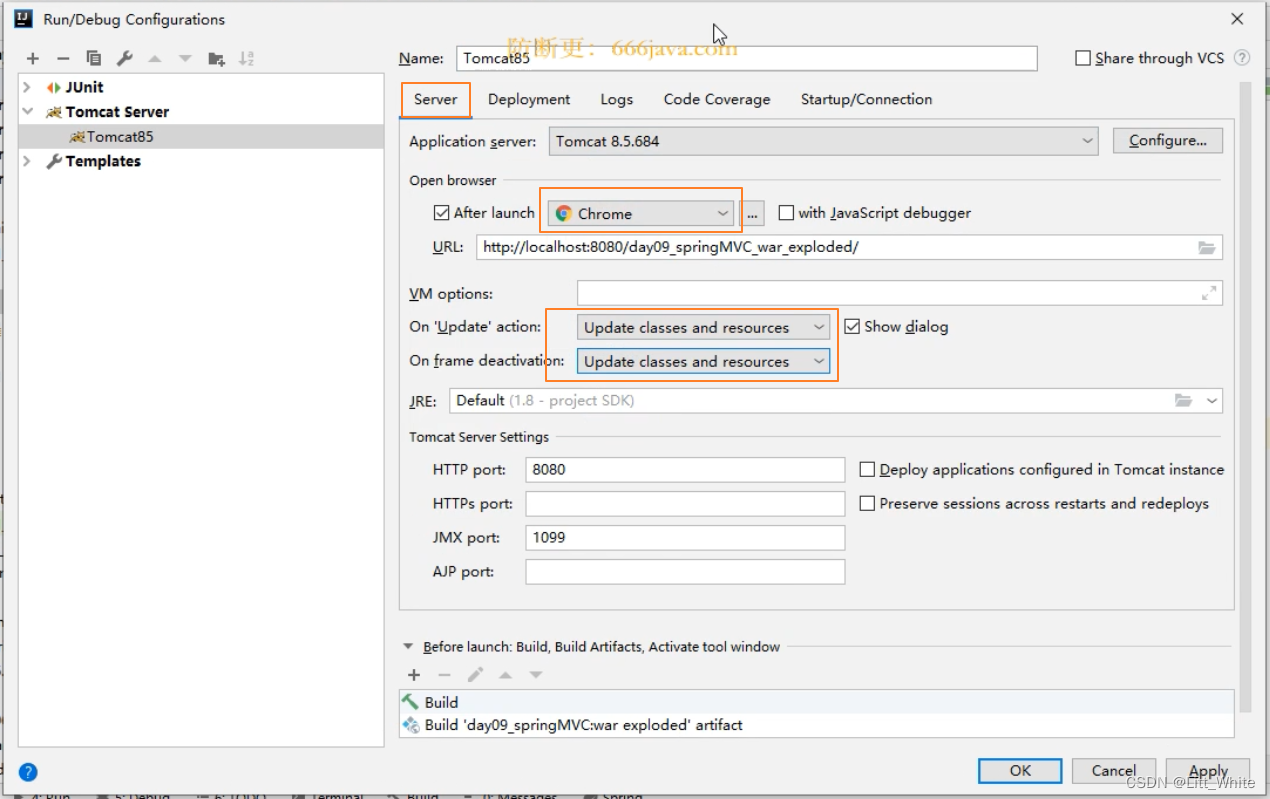

第三章 @RequestMapping详解
@RequestMapping注解作用:为指定的类或方法设置相应URL
3.1 @RequestMapping注解位置
- 书写在类上面
- 作用:为当前类设置映射URL
- 注意:不能单独使用,需要与方法上的@RequestMapping配合使用
- 书写在方法上面
- 作用:为当前方法设置映射URL
- 注意:可以单独使用
注意:当类和类中方法都有
@RequestMapping注解时,此时路径应为/类的RequestMapping路径/方法的RequestMapping路径
3.2 @RequestMapping注解属性
-
value属性
- 类型:String[]
- 作用:设置URL信息
-
path属性
- 类型:String[]
- 作用:与value属性作用一致
-
method属性
-
类型:RequestMethod[]
public enum RequestMethod { GET, HEAD, POST, PUT, PATCH, DELETE, OPTIONS, TRACE } -
作用:为当前URL【类或方法】设置请求方式【POST、DELETE、PUT、GET】
-
注意:
- 默认情况:所有请求方式均支持
- 如请求方式不支持,会报如下错误
- 405【Request method ‘GET’ not supported】
-
-
params
- 类型:String[]
- 作用:为当前URL设置请求参数
- 注意:如设置指定请求参数,但URL中未携带指定参数,会报如下错误
- 400【Parameter conditions “lastName” not met for actual request parameters:】
-
headers
- 类型:String[]
- 作用:为当前URL设置请求头信息
- 注意:如设置指定请求头,但URL中未携带请求头,会报如下错误
- 404:请求资源未找到
-
示例代码
@RequestMapping(value = {"/saveEmp","/insertEmp"}, method = RequestMethod.GET, params = "lastName=lisi", headers = "User-Agent=Mozilla/5.0 (Windows NT 10.0; Win64; x64) AppleWebKit/537.36 (KHTML, like Gecko) Chrome/99.0.4844.84 Safari/537.36") public String saveEmp(){ System.out.println("添加员工信息!!!!"); return SUCCESS; }
@RequestMapping(method = RequestMethod.POST) public @interface PostMapping {} @RequestMapping(method = RequestMethod.GET) public @interface GetMapping {} @RequestMapping(method = RequestMethod.PUT) public @interface PutMapping {} @RequestMapping(method = RequestMethod.DELETE) public @interface DeleteMapping {}
3.3 @RequestMapping支持Ant 风格的路径(了解)
-
常用通配符
a) ?:匹配一个字符
b) *:匹配任意字符
c) **:匹配多层路径
-
示例代码
@RequestMapping("/testAnt/**") public String testAnt(){ System.out.println("==>testAnt!!!"); return SUCCESS; }
第四章 @PathVariable 注解
4.1 @PathVariable注解位置
@Target(ElementType.PARAMETER)
- 书写在参数前面
4.2 @PathVariable注解作用
-
获取URL中占位符参数
-
占位符语法:{}
-
示例代码
<a th:href="@{/EmpController/testPathVariable/1001}">测试PathVariable注解</a><br>/** * testPathVariable * @return */ @RequestMapping("/testPathVariable/{empId}") public String testPathVariable(@PathVariable("empId") Integer empId){ System.out.println("empId = " + empId); return SUCCESS; }
4.3 @PathVariable注解属性
- value属性
- 类型:String
- 作用:设置占位符中的参数名
- name属性
- 类型:String
- 作用:与name属性的作用一致
- required属性
- 类型:boolean
- 作用:设置当前参数是否必须入参【默认值:true】
- true:表示当前参数必须入参,如未入参会报如下错误
- Missing URI template variable ‘empId’ for method parameter of type Integer
- false:表示当前参数不必须入参,如未入参,会装配null值
- true:表示当前参数必须入参,如未入参会报如下错误
第五章 REST【RESTful】风格CRUD
5.1 REST的CRUD与传统风格CRUD对比
-
传统风格CRUD
- 功能 URL 请求方式
- 增 /insertEmp POST
- 删 /deleteEmp?empId=1001 GET
- 改 /updateEmp POST
- 查 /selectEmp?empId=1001 GET
-
REST风格CRUD
- 功能 URL 请求方式
- 增 /emp POST
- 删 /emp/1001 DELETE
- 改 /emp PUT
- 查 /emp/1001 GET
5.2 REST风格CRUD优势
- 提高网站排名
- 排名方式
- 竞价排名
- 技术排名
- 排名方式
- 便于第三方平台对接
5.3 实现PUT&DELETE提交方式步骤
- 注册过滤器HiddenHttpMethodFilter
<!-- 注册过滤器 --> <filter> <filter-name>HiddenHttpMethodFilter</filter-name> <filter-class>org.springframework.web.filter.HiddenHttpMethodFilter</filter-class> </filter> <filter-mapping> <filter-name>HiddenHttpMethodFilter</filter-name> <!-- 所有的请求都需要经过过滤器 --> <url-pattern>/*</url-pattern> </filter-mapping> - 设置表单的提交方式为POST
- 设置参数:_method=PUT或_method=DELETE
<h3>修改员工--PUT方式提交</h3> <form th:action="@{/emp}" method="post"> <input type="hidden" name="_method" value="PUT"> <input type="submit" value="修改员工信息"> </form> <h3>删除员工--DELETE方式提交</h3> <form th:action="@{/emp/1001}" method="post"> <input type="hidden" name="_method" value="DELETE"> <input type="submit" value="删除员工信息"> </form>
5.4 源码解析HiddenHttpMethodFilter
public static final String DEFAULT_METHOD_PARAM = "_method";
private String methodParam = DEFAULT_METHOD_PARAM;
@Override
protected void doFilterInternal(HttpServletRequest request, HttpServletResponse response, FilterChain filterChain)
throws ServletException, IOException {
HttpServletRequest requestToUse = request;
if ("POST".equals(request.getMethod()) && request.getAttribute(WebUtils.ERROR_EXCEPTION_ATTRIBUTE) == null) {
String paramValue = request.getParameter(this.methodParam);
if (StringUtils.hasLength(paramValue)) {
String method = paramValue.toUpperCase(Locale.ENGLISH);
if (ALLOWED_METHODS.contains(method)) {
requestToUse = new HttpMethodRequestWrapper(request, method);
}
}
}
filterChain.doFilter(requestToUse, response);
}
/**
* Simple {@link HttpServletRequest} wrapper that returns the supplied method for
* {@link HttpServletRequest#getMethod()}.
*/
private static class HttpMethodRequestWrapper extends HttpServletRequestWrapper {
private final String method;
public HttpMethodRequestWrapper(HttpServletRequest request, String method) {
super(request);
this.method = method;
}
@Override
public String getMethod() {
return this.method;
}
}
第六章 SpringMVC处理请求数据
使用Servlet处理请求数据
- 请求参数
- String param = request.getParameter();
- 请求头
- request.getHeader();
- Cookie
- request.getCookies();
6.1 处理请求参数
- 默认情况:可以将请求参数名,与入参参数名一致的参数,自动入参【自动类型转换】
<h2>测试SpringMVC处理请求数据</h2>
<h3>处理请求参数</h3>
<a th:href="@{/requestParam1(stuName='zs', stuAge=18)}">测试处理请求参数1</a>
/**
* 获取请求参数
* @return
*/
@RequestMapping("/requestParam1")
public String requestParam1(String stuName,Integer stuAge){
System.out.println("stuName = "+ stuName);
System.out.println("stuAge = "+ stuAge);
return SUCCESS;
}
-
SpringMVC支持POJO入参
-
要求:请求参数名与POJO的属性名保持一致
-
示例代码
<form th:action="@{/saveEmp}" method="POST"> id:<input type="text" name="id"><br> LastName:<input type="text" name="lastName"><br> Email:<input type="text" name="email"><br> Salary:<input type="text" name="salary"><br> <input type="submit" value="添加员工信息"> </form>/** * 获取请求参数POJO * @return */ @RequestMapping(value = "/saveEmp",method = RequestMethod.POST) public String saveEmp(Employee employee){ System.out.println("employee = " + employee); return SUCCESS; }
-
-
@RequestParam注解
-
作用:如请求参数与入参参数名不一致时,可以使用@RequestParam注解设置入参参数名
-
属性
- value
- 类型:String
- 作用:设置需要入参的参数名
- name
- 类型:String
- 作用:与value属性作用一致
- required
- 类型:Boolean
- 作用:设置当前参数,是否必须入参
- true【默认值】:表示当前参数必须入参,如未入参会报如下错误
- 400【Required String parameter ‘sName’ is not present】
- false:表示当前参数不必须入参,如未入参,装配null值
- true【默认值】:表示当前参数必须入参,如未入参会报如下错误
- defaultValue
- 类型:String
- 作用:当装配数值为null时,指定当前defaultValue默认值
- value
-
示例代码
<h2>测试SpringMVC处理请求数据</h2> <h3>处理请求参数</h3> <a th:href="@{/requestParam1(sName='zs', stuAge=18)}">测试处理请求参数1</a>/** * 获取请求参数 * @return */ @RequestMapping("/requestParam1") public String requestParam1(@RequestParam(value = "sName",required = false, defaultValue = "zhangsan") String stuName, Integer stuAge){ System.out.println("stuName = " + stuName); System.out.println("stuAge = " + stuAge); return SUCCESS; }
-
6.2 处理请头
-
语法:@RequestHeader注解
-
属性
- value
- 类型:String
- 作用:设置需要获取请求头名称
- name
- 类型:String
- 作用:与value属性作用一致
- required
- 类型:boolean
- 作用:【默认值true】
- true:设置当前请求头是否为必须入参,如未入参会报如下错误
- 400【Required String parameter ‘sName’ is not present】
- false:表示当前参数不必须入参,如未入参,装配null值
- true:设置当前请求头是否为必须入参,如未入参会报如下错误
- defaultValue
- 类型:String
- 作用:当装配数值为null时,指定当前defaultValue默认值
- value
-
示例代码
<a th:href="@{/testGetHeader}">测试获取请求头</a>/** * 获取请求头 * @return */ @RequestMapping(value = "/testGetHeader") public String testGetHeader(@RequestHeader("Accept-Language")String al, @RequestHeader("Referer") String ref){ System.out.println("al = " + al); System.out.println("ref = " + ref); return SUCCESS; }
6.3 处理Cookie信息
-
语法:@CookieValue获取Cookie数值
-
属性
- value
- 类型:String
- 作用:设置需要获取Cookie名称
- name
- 类型:String
- 作用:与value属性作用一致
- required
- 类型:boolean
- 作用:【默认值true】
- true:设置当前Cookie是否为必须入参,如未入参会报如下错误
- 400【Required String parameter ‘sName’ is not present】
- false:表示当前Cookie不必须入参,如未入参,装配null值
- true:设置当前Cookie是否为必须入参,如未入参会报如下错误
- defaultValue
- 类型:String
- 作用:当装配数值为null时,指定当前defaultValue默认值
- value
-
示例代码
<a th:href="@{/setCookie}">设置Cookie信息</a><br> <a th:href="@{/getCookie}">获取Cookie信息</a><br>/** * 设置Cookie * @return */ @RequestMapping("/setCookie") public String setCookie(HttpSession session){ // Cookie cookie = new Cookie(); System.out.println("session.getId() = " + session.getId()); return SUCCESS; } /** * 获取Cookie * @return */ @RequestMapping("/getCookie") public String getCookie(@CookieValue("JSESSIONID")String cookieValue){ System.out.println("cookieValue = " + cookieValue); return SUCCESS; }
6.4 使用原生Servlet-API
- 将原生Servlet相关对象,入参即可
@RequestMapping("/useRequestObject")
public String useRequestObject(HttpServletRequest request){}
第七章 SpringMVC处理响应数据
7.1 使用ModelAndView
-
语法:使用ModelAndView对象作为方法返回值类型,处理响应数据
-
ModelAndView是模型数据与视图对象的集成对象,源码如下
public class ModelAndView { /** View instance or view name String. */ //view代表view对象或viewName【建议使用viewName】 @Nullable private Object view; /** Model Map. */ //ModelMap集成LinkedHashMap,存储数据 @Nullable private ModelMap model; /** 设置视图名称 */ public void setViewName(@Nullable String viewName) { this.view = viewName; } /** * 获取视图名称 */ @Nullable public String getViewName() { return (this.view instanceof String ? (String) this.view : null); } /** 获取数据,返回Map【无序,model可以为null】 */ @Nullable protected Map<String, Object> getModelInternal() { return this.model; } /** * 获取数据,返回 ModelMap【有序】 */ public ModelMap getModelMap() { if (this.model == null) { this.model = new ModelMap(); } return this.model; } /** * 获取数据,返回Map【无序】 */ public Map<String, Object> getModel() { return getModelMap(); } /** 设置数据 */ public ModelAndView addObject(String attributeName, @Nullable Object attributeValue) { getModelMap().addAttribute(attributeName, attributeValue); return this; } } -
底层实现原理
- 数据共享到request域
- 跳转路径方式:转发
-
示例代码
<h2>测试SpringMVC处理响应数据</h2> <h3>1、测试响应数据--ModelAndView</h3> <a th:href="@{/ResponseDataController/testModelAndView}">测试处理请求参数1</a> <br>@Controller @RequestMapping("/ResponseDataController") public class ResponseDataController { @RequestMapping("/testModelAndView") public ModelAndView testModelAndView(){ ModelAndView mv = new ModelAndView(); // 设置数据 mv.addObject("stuName","lisi"); // 设置视图 mv.setViewName("response_success"); return mv; } }<h2>响应数据--成功页面</h2> stuName:<span th:text="${stuName}"></span>
7.2 使用Model、ModelMap、Map
-
语法:使用Model、ModelMap、Map作为方法入参,处理响应数据
-
示例代码
<h3>2、测试响应数据--ModelOrModelMapOrMap</h3> <a th:href="@{/ResponseDataController/testModelOrModelMapOrMap}">测试处理响应参数2</a> <br>/** * 使用Map、Model、ModelMap处理响应数据 * @return */ // @RequestMapping("/testModelOrModelMapOrMap") // public String testModelOrModelMapOrMap(Map<String,Object> map){ 设置数据--Map方式 // map.put("stuName","zhangsan"); // // return "response_success"; // } @RequestMapping("/testModelOrModelMapOrMap") public String testModelOrModelMapOrMap(Model model){ // 设置数据--Model/ModelMap方式 model.addAttribute("stuName","wangwu"); return "response_success"; }<h2>响应数据--成功页面</h2> stuName:<span th:text="${stuName}"></span> -
底层实现原理
- 数据共享到request域
- 跳转路径方式:转发
7.3 SpringMVC中域对象
-
SpringMVC封装数据,默认使用request域对象
-
session域的使用
-
方式一
/** * 测试响应数据【其他域对象】 * @return */ @GetMapping("/testScopeResponsedata") public String testScopeResponsedata(HttpSession session){ session.setAttribute("stuName","xinlai"); return "response_success"; } -
方式二
@Controller @SessionAttributes(value = "stuName") //将request域中数据,同步到session域中 public class TestResponseData { @RequestMapping("/testSession") public String testSession( Map<String, Object> map ){ // 设置数据--数据在Session域 map.put("stuName","sunqi"); return "response_success"; } }
-
第八章 SpringMVC处理请求响应乱码
JavaWeb解决乱码:三行代码
- 解决POST请求乱码
- 解决GET请求乱码【Tomcat8及以后,自动解决】
- 解决响应乱码
8.1 源码解析CharacterEncodingFilter
public class CharacterEncodingFilter extends OncePerRequestFilter {
//需要设置字符集
@Nullable
private String encoding;
//true:处理请乱码
private boolean forceRequestEncoding = false;
//true:处理响应乱码
private boolean forceResponseEncoding = false;
public String getEncoding() {
return this.encoding;
}
public boolean isForceRequestEncoding() {
return this.forceRequestEncoding;
}
public void setForceResponseEncoding(boolean forceResponseEncoding) {
this.forceResponseEncoding = forceResponseEncoding;
}
public void setForceEncoding(boolean forceEncoding) {
// 合并了forceRequestEncoding和forceResponseEncoding
this.forceRequestEncoding = forceEncoding;
this.forceResponseEncoding = forceEncoding;
}
@Override
protected void doFilterInternal(
HttpServletRequest request, HttpServletResponse response, FilterChain filterChain)
throws ServletException, IOException {
// 字符集
String encoding = getEncoding();
if (encoding != null) {
if (isForceRequestEncoding() || request.getCharacterEncoding() == null) {
// 解决请求乱码
request.setCharacterEncoding(encoding);
}
if (isForceResponseEncoding()) {
// 解决响应乱码
response.setCharacterEncoding(encoding);
}
}
filterChain.doFilter(request, response);
}
}
8.2 处理请求与响应乱码
-
SpringMVC底层默认处理响应乱码
-
SpringMVC处理请求乱码步骤
- 注册CharacterEncodingFilter
- 注册CharacterEncodingFilter必须是第一Filter位置
- 为CharacterEncodingFilter中属性encoding赋值
- 为CharacterEncodingFilter中属性forceRequestEncoding赋值
- 注册CharacterEncodingFilter
-
示例代码
<!-- 必须是第一过滤器位置--> <!-- 注册CharacterEncodingFilter,解决乱码问题 --> <filter> <filter-name>CharacterEncodingFilter</filter-name> <filter-class>org.springframework.web.filter.CharacterEncodingFilter</filter-class> <!-- 设置初始化的字符集 --> <init-param> <param-name>encoding</param-name> <param-value>UTF-8</param-value> </init-param> <!-- 解决请求及响应乱码 --> <init-param> <param-name>forceRequestEncoding</param-name> <param-value>true</param-value> </init-param> </filter> <filter-mapping> <filter-name>CharacterEncodingFilter</filter-name> <url-pattern>/*</url-pattern> </filter-mapping>
第九章 SpringMVC视图及视图解析器
9.1 视图解析器对象【ViewResolver】
-
概述:SpringMVC中所有的视图解析器对象均实现了ViewResolver接口
-
作用:使用ViewResolver,将View从ModelAndView中解析出来
- 在SpringMVC中,无论方法返回的是ModelAndView还是String,最终底层都会封装为ModelAndView
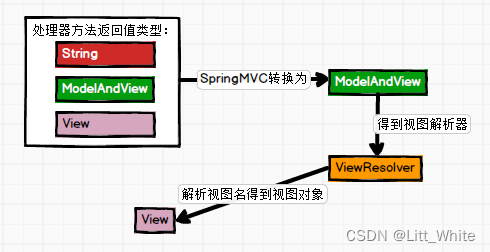
9.2 视图对象【View】
- 概述:SpringMVC中所有的视图对象【View】均实现了view接口
- 作用:视图渲染
- 将数据共享到域中【request,session,application(ServletContext)】
- 跳转路径【转发或重定向】
第十章 源码解析SpringMVC工作原理
10.1 Controller中方法的返回值问题
-
无论方法返回是ModelAndView还是String,最终SpringMVC底层,均会封装为ModelAndView对象
//DispatcherServlet的1061行代码 ModelAndView mv = null; mv = ha.handle(processedRequest, response, mappedHandler.getHandler()); -
SpringMVC解析mv【ModelAndView】
//DispatcherServlet的1078行代码 processDispatchResult(processedRequest, response, mappedHandler, mv, dispatchException); -
ThymeleafView对象中344行代码【SpringMVC底层处理响应乱码】
//computedContentType="text/html;charset=UTF-8" response.setContentType(computedContentType); -
WebEngineContext对象中783行代码【SpringMVC底层将数据默认共享到request域】
this.request.setAttribute(name, value);
10.2 视图及视图解析器源码
-
视图解析器将View从ModelAndView中解析出来
-
ThymeleafViewResolver的837行代码
//底层使用反射的方式,newInstance()创建视图对象 final AbstractThymeleafView viewInstance = BeanUtils.instantiateClass(getViewClass());
-
第十一章 视图控制器&重定向&加载静态资源
11.1 视图控制器
- 作用:如果没有业务逻辑处理,只是单纯的跳转页面,可以通过视图控制器跳转
- 语法:view-controller
- 步骤
- 添加<mvc:view-controller>标签:为指定URL映射html页面
- 添加<mvc:annotation-driven>
- 有20+种功能
- 配置了<mvc:view-controller>标签之后会导致其他请求路径都失效,添加<mvc:annotation-driven>解决
<!-- 添加视图控制器 --> <mvc:view-controller path="/" view-name="index"></mvc:view-controller> <mvc:view-controller path="/toRestPage" view-name="rest_page"></mvc:view-controller> <mvc:view-controller path="/toRequestDataPage" view-name="toRequestDataPage"></mvc:view-controller> <mvc:view-controller path="/toResponseDataPage" view-name="toResponseDataPage"></mvc:view-controller> <!-- 配置了<mvc:view-controller>标签之后会导致其他请求路径都失效,添加<mvc:annotation-driven>解决 --> <mvc:annotation-driven></mvc:annotation-driven>
11.2 重定向
- 语法:
return "redirect: / xxx.html";
11.3 加载静态资源
-
由DefaultServlet加载静态资源到服务器
- 静态资源:html、css、js等资源
- tomcat->conf->web.xml关键代码如下:
<servlet> <servlet-name>default</servlet-name> <servlet-class>org.apache.catalina.servlets.DefaultServlet</servlet-class> <init-param> <param-name>debug</param-name> <param-value>0</param-value> </init-param> <init-param> <param-name>listings</param-name> <param-value>false</param-value> </init-param> <load-on-startup>1</load-on-startup> </servlet> <servlet-mapping> <servlet-name>default</servlet-name> <url-pattern>/</url-pattern> </servlet-mapping> -
发现问题
- DispatcherServlet与DefaultServlet的URL配置均为:/,导致DispatcherServlet中的配置将DefaultServlet配置的/覆盖了【DefaultServlet失效,无法加载静态资源】
-
解决方案
<!-- 解决静态资源加载问题--> <mvc:default-servlet-handler></mvc:default-servlet-handler> <!-- 添加上述标签,会导致Controller无法正常使用,需要添加mvc:annotation-driven解决 --> <mvc:annotation-driven></mvc:annotation-driven>
11.4 源码解析重定向原理
-
创建RedirectView对象【ThymeleafViewResolver的775行代码】
// Process redirects (HTTP redirects) if (viewName.startsWith(REDIRECT_URL_PREFIX)) { vrlogger.trace("[THYMELEAF] View \"{}\" is a redirect, and will not be handled directly by ThymeleafViewResolver.", viewName); final String redirectUrl = viewName.substring(REDIRECT_URL_PREFIX.length(), viewName.length()); final RedirectView view = new RedirectView(redirectUrl, isRedirectContextRelative(), isRedirectHttp10Compatible()); return (View) getApplicationContext().getAutowireCapableBeanFactory().initializeBean(view, REDIRECT_URL_PREFIX); } -
RedirectView视图渲染
-
RedirectView对象URL处理【330行代码】

-
执行重定向【RedirectView的627行代码】

-


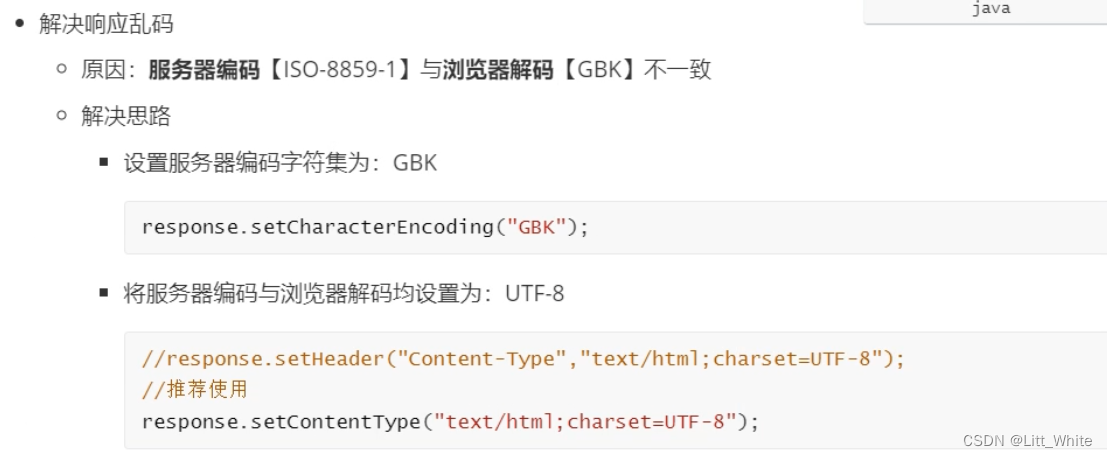
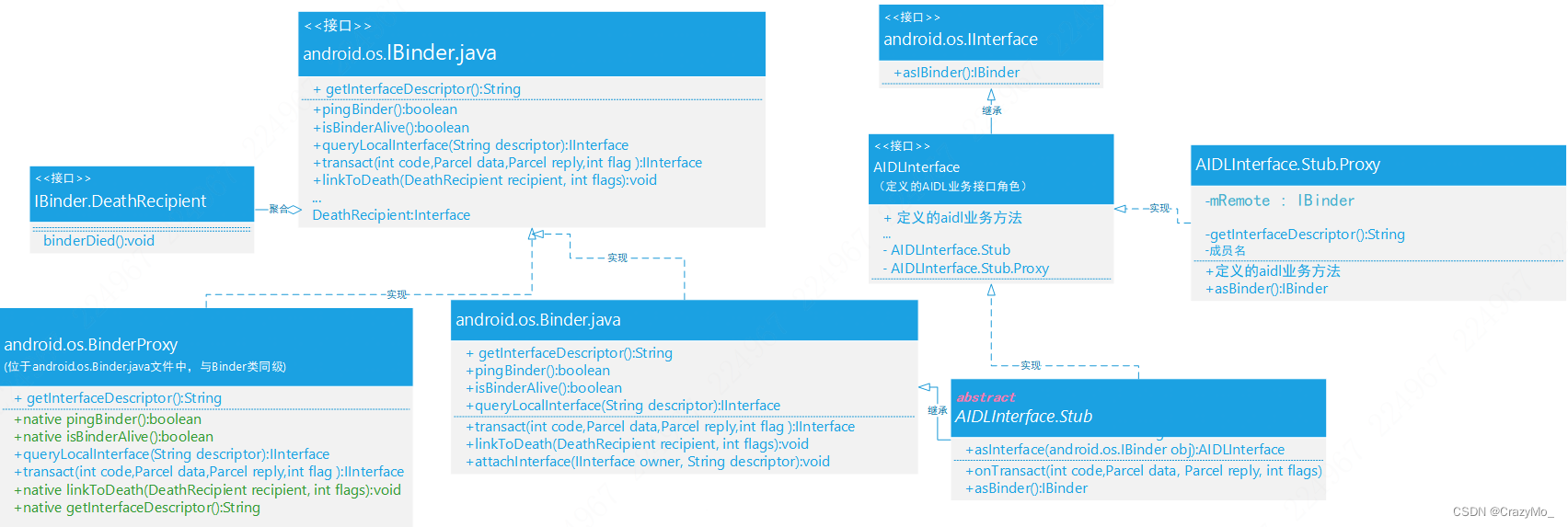

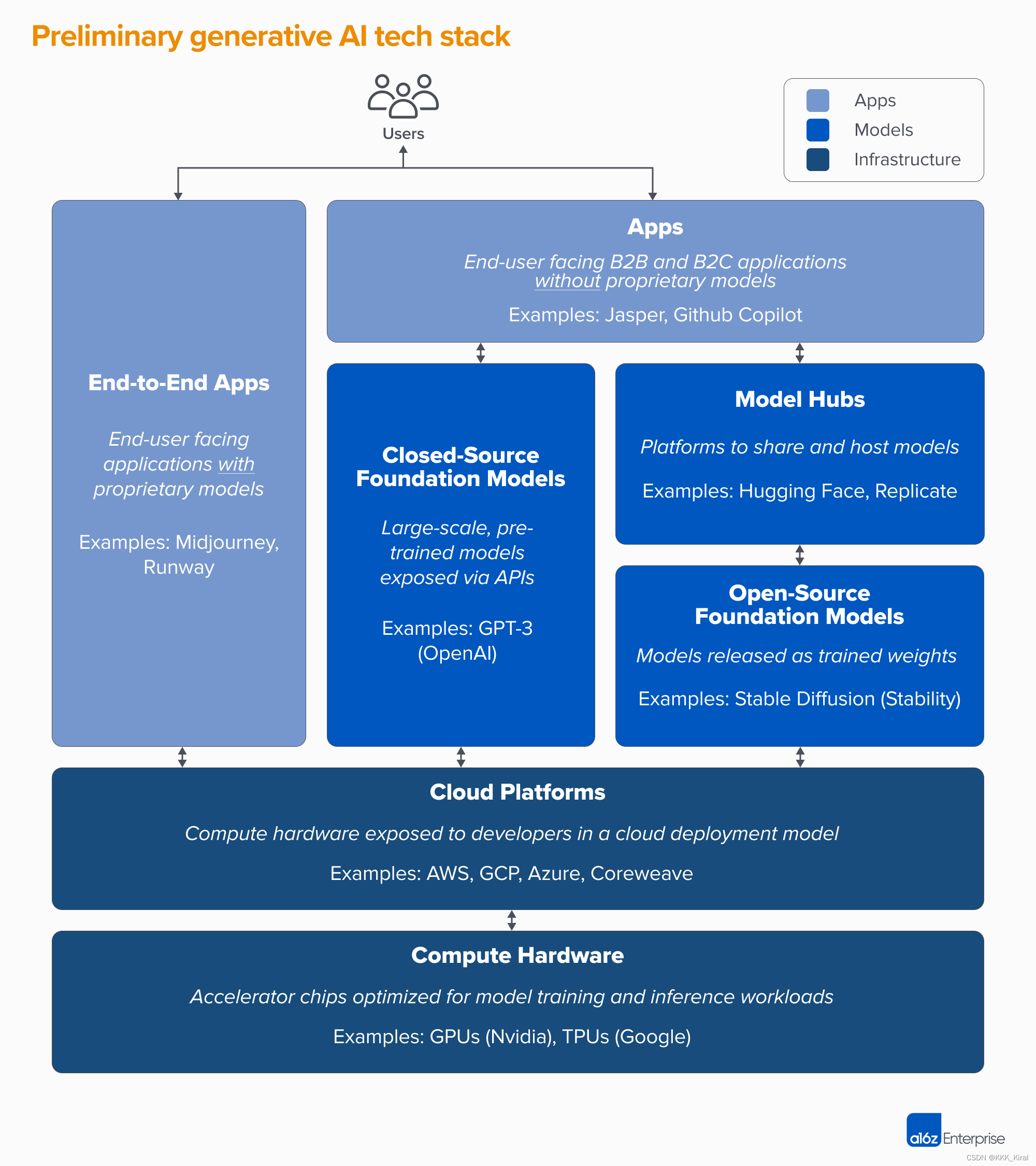
![[个人笔记] Zabbix实现自定义脚本监控Agent端](https://img-blog.csdnimg.cn/ba9a32e68079454889251c63a0169816.png)
